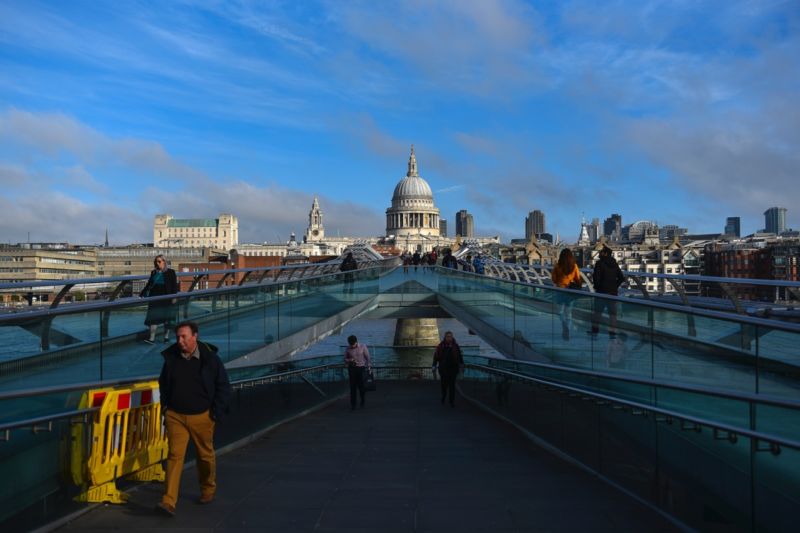
Enlarge / London’s Millennium Bridge had issues with excessive shaking and swaying when it first opened in June 2000. (credit: Alberto Pezzali/NurPhoto/Getty Images)
London’s Millennium Bridge is notorious for its “wobble” when it first opened in June 2000, as thousands of pedestrians streamed across. Londoners nicknamed it “Wobbly Bridge.” The accepted explanation has been that the swaying was due to a weird synchronicity between the bridge’s lateral (sideways) sway and pedestrians’ gaits—an example of emergent collective phenomena.
But that explanation turns out to be a bit more complicated, according to a recent paper published in the journal Nature Communications. “This [old] explanation was so popular, it has been part of the scientific zeitgeist,” said co-author Igor Belykh, a mathematician at Georgia State University. “Our work shows that very tiny vibrations from each person walking can get amplified significantly.” People adjust their footsteps to keep their balance in response to the wobble, which only makes things worse. Eventually the bridge becomes unstable.
As we’ve reported previously, this phenomenon is not limited to the Millennium Bridge. There’s a sign dating back to 1873 on London’s Albert Bridge warning military troops to break their usual lock-step motion when crossing, since the bridge is wont to shake and wobble—hence its nickname, “The Trembling Lady.” Other similar “unstable” bridges include the Clifton Suspension Bridge in Bristol, UK; the Squibb Park Bridge in Brooklyn, New York; and the Changi Mezzanine Bridge in Singapore’s airport.
